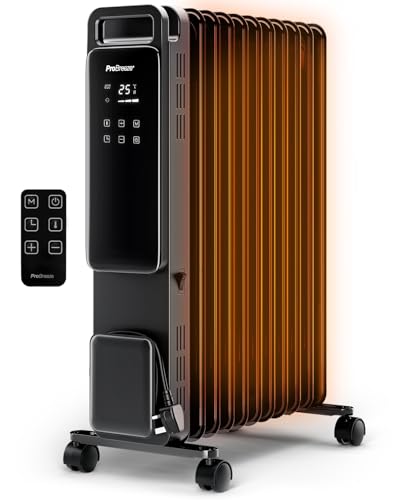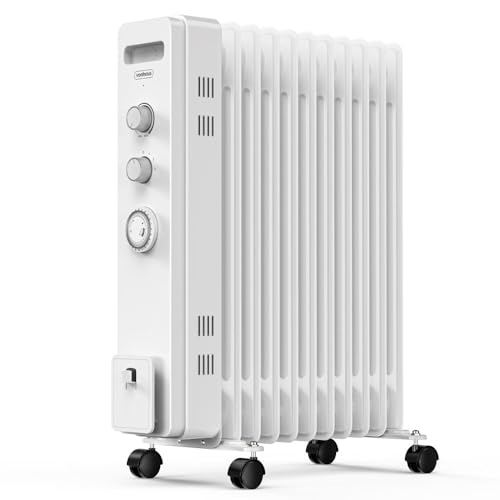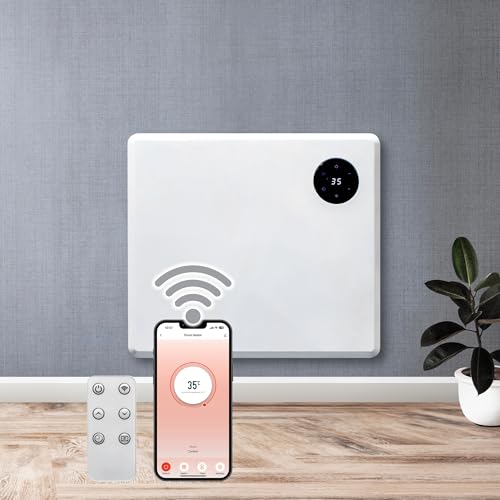Understanding Electric Radiators: What They Are and How They Work
What is an Electric Radiator?
Electric radiators are portable heating solutions that convert electricity into warmth, making your home comfortable during the cold months. Unlike traditional radiators that rely on central heating systems, electric radiators operate independently, heating up quickly and efficiently. They’ll typically consist of a metal casing filled with oil or use convection to warm up the air around them, providing a consistent and effective source of heat.
How Do Electric Radiators Operate?
Electric radiators function by drawing electricity from your main power supply. They employ electric elements that heat up and radiate warmth into the room. Many modern models come equipped with advanced features such as programmable timers, thermostats, and remote controls, allowing us to customise our heating preferences. This means we can ensure a warm home whenever we need it without wasting energy.
Key Features to Consider When Buying an Electric Radiator
Heating Capacity
One of the most crucial factors to consider is the heating capacity, often measured in watts. The larger the room, the more watts you’ll need. Typically, around 100 watts is recommended per square metre to achieve a comfortable temperature. By understanding the size of the room you want to heat, we can select a radiator that delivers effective warmth.
Energy Efficiency Features
Look for models that offer energy-saving features, like thermostats and timers. These functionalities allow us to set the radiator to operate only when needed, which can significantly lower energy costs. Many electric radiators now include ‘eco’ modes that maintain a desired temperature while consuming less power.
Design and Portability
Considering the design is vital because electric radiators come in various styles and sizes. If we’re looking for a unit that fits seamlessly into our space, we should think about how it complements our interior decor. Additionally, portability is another aspect; many electric radiators feature castors or lightweight designs, enabling us to move them easily from room to room as needed.
Choosing the Right Size and Style for Your Space
Determining the Right Size
To ascertain the right size for our electric radiator, we must measure the dimensions of the room we intend to heat. A compact unit may suffice for a small bedroom, while larger living areas may require a more powerful model. Additionally, consider the layout of the room, especially if furniture placement might obstruct heat circulation.
Matching Style with Decor
Electric radiators are available in various styles, including sleek, modern designs and traditional radiators. Identifying our home’s style can help us choose a radiator that not only functions well but also enhances our living space’s aesthetic. For instance, a contemporary home might benefit from a slim, minimalist radiator, while a rustic space could be complemented by a vintage-look heater.
Energy Efficiency: How Electric Radiators Save You Money
Low Initial Costs and Installation
Electric radiators typically have a lower initial cost compared to other heating systems. There’s no expensive installation required, which means we can simply plug them into a power outlet and start enjoying their warmth. This accessibility can save us a considerable amount upfront, especially during colder months.
Cost-Effective Heating Solutions
Since electric radiators heat up quickly and can be used in specific rooms, they offer a cost-effective way to heat our homes. Instead of maintaining a constant temperature throughout an entire house, we can target our heating needs. By only heating occupied spaces, we lower our energy consumption—translating to reduced bills over time.
Top Electric Radiator Models Reviewed
Model Comparisons
When considering specific models, it’s important to review their key features based on our needs. We can focus on various factors such as heating capacity, efficiency ratings, and available designs. Each model’s user reviews can provide insights into their performance, reliability, and ease of use. This way, we can make an informed choice, prioritising those that resonate with our individual requirements.
Customer Feedback and Recommendations
Understanding the feedback from other customers can help guide our decision. People often share their experiences regarding how well a model heats spaces, its noise levels, and overall satisfaction with the product. Choosing a model that consistently receives positive reviews ensures we select a radiator that meets expectations and provides value for money.























